|
Books Should Be Free Loyal Books Free Public Domain Audiobooks & eBook Downloads |
|
|
Books Should Be Free Loyal Books Free Public Domain Audiobooks & eBook Downloads |
|
Non-fiction |
|---|
|
Book type:
Sort by:
View by:
|
By: R. Lakeland | |
|---|---|
 The Teesdale Angler
The Teesdale Angler
| |
By: R. R. (Rufus Rolla) Lutz (1873-) | |
|---|---|
 Wage Earning and Education
Wage Earning and Education
| |
By: R. Talbot Kelly (1861-1934) | |
|---|---|
 Peeps at Many Lands: Egypt
Peeps at Many Lands: Egypt
A short travelogue of Egypt, this book was written as part of an early 20th century series of travelogues on exotic destinations. | |
By: Rabindranath Tagore (1861-1941) | |
|---|---|
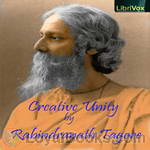 Creative Unity
Creative Unity
Gurudev Rabindranath Tagore talks of the many things he feels is necessary for creativity through joy of unity, he covers many topics like the creative ideal, makes comparisons of creativity between the east and the west, the spirit of freedom and about his idea of an University. | |
By: Rai Bahadur A. Mitra | |
|---|---|
 Bubonic Plague
Bubonic Plague
Dr. Rai Bahadur A. Mitra who was the Chief Medical Officer in Kashmir presents a short treatise on the bubonic plague. The book ranges from a short history of the bubonic plague, including an account of the great 1665 plague in London, through description of the disease, treatment and prevention. - Summary by Larry Wilson | |
By: Ralph Waldo Emerson | |
|---|---|
 Nature
Nature
“Nature” is a short essay by Ralph Waldo Emerson published anonymously in 1836. It is in this essay that the foundation of transcendentalism is put forth, a belief system that espouses a non-traditional appreciation of nature. Recent advances in zoology, botany, and geology confirmed Emerson’s intuitions about the intricate relationships of nature at large. The publication of “Nature” is usually taken to be the watershed moment at which transcendentalism became a major cultural movement... | |
 Essays, Second Series
Essays, Second Series
Ralph Waldo Emerson (1803 – 1882) was an American essayist, philosopher, and poet, best remembered for leading the Transcendentalist movement of the mid 19th century. His teachings directly influenced the growing New Thought movement of the mid-1800s. | |
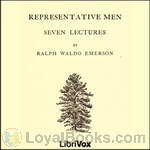 Representative Men
Representative Men
A series of biographical lectures originally published in 1850. Each chapter is a philosophical treatment of the life of an intellectual. The six representatives are Plato, Swedenborg, Shakespeare, Montaigne, Napolean and Goethe. (Introduction by S. Kovalchik) | |
By: Raymond F. (Raymond Francis) Yates (1895-) | |
|---|---|
 Boys' Book of Model Boats
Boys' Book of Model Boats
| |
By: Regina Maria Roche (1764-1845) | |
|---|---|
 Children Of The Abbey
Children Of The Abbey
Published in 1796, this novel tells the trials and tribulations of Amanda and Oscar FitzAlan, brother and sister who have to navigate the world with no money or status, and hardly any connections. They find love, yet, again and again, things block the way to happiness and, worse, destroy Amanda's reputation. This is the story of abuse of power, loyalty, and, ultimately, love in many forms. - Summary by Stav Nisser. | |
By: René Descartes (1596-1650) | |
|---|---|
 Meditations on First Philosophy
Meditations on First Philosophy
The foundations of modern skepticism and objective thinking are thought to be rooted in the philosophy of Rene Descartes, the French mathematician, philosopher and writer. This great sixteenth century thinker also gave us theories on mind-body dualism and the concept of ethics as the highest form of science. He is considered the Father of Modern Western Philosophy. His theories also led to the emancipation of humanity from the doctrine that the Church is the sole authority over Man and led to a more autonomous idea of the human condition... | |
 Discourse on the Method of Rightly Conducting One's Reason and of Seeking Truth in the Sciences
Discourse on the Method of Rightly Conducting One's Reason and of Seeking Truth in the Sciences
The Discourse on Method is best known as the source of the famous quotation “cogito ergo sum”, “I think, therefore I am.” …. It is a method which gives a solid platform from which all modern natural sciences could evolve. With this work, the idea of skepticism was revived from the ancients such as Sextus Empiricus and modified to account for a truth that Descartes found to be incontrovertible. Descartes started his line of reasoning by doubting everything, so as to assess the world from a fresh perspective, clear of any preconceived notions. | |
By: Reuben Gold Thwaites (1853-1913) | |
|---|---|
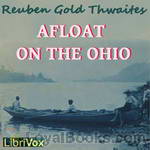 Afloat on the Ohio
Afloat on the Ohio
Afloat on the Ohio, An Historical Pilgrimage, of a Thousand Miles in a Skiff, From Redstone to Cairo.There were four of us pilgrims—my Wife, our Boy of ten and a half years, the Doctor, and I. My object in going—the others went for the outing—was to gather "local color" for work in Western history. The Ohio River was an important factor in the development of the West. I wished to know the great waterway intimately in its various phases,—to see with my own eyes what the borderers saw; in imagination, to redress the pioneer stage, and repeople it. ( From the Preface ) | |
 Historic Waterways
Historic Waterways
Historic Waterways, Six Hundred Miles of Canoeing down the Rock, Fox and Wisconsin Rivers.This volume is the record of six hundred miles of canoeing experiences on historic waterways in Wisconsin and Illinois during the summer of 1887. There has been no attempt at exaggeration, to color its homely incidents, or to picture charms where none exist. It is intended to be a simple, truthful narrative of what was seen and done upon a series of novel outings through the heart of the Northwest. If it may induce others to undertake similar excursions, and thus increase the little navy of healthy and self-satisfied canoeists, the object of the publication will have been attained. | |
By: Rev. Gerald T. Brennan | |
|---|---|
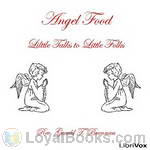 Angel Food: Little Talks to Little Folks
Angel Food: Little Talks to Little Folks
"Angel Food" consists of a series of short sermons for children on the truths of the Catholic Faith - but told with engaging stories, in a style and simple language that children can understand.The author was a parish priest in New York for many years during the mid 1900's. He was the author of several books for children, the most well known being the books in what is considered the "Angel Food" series. | |
 Angel Food Time: Little Talks to Little Folks
Angel Food Time: Little Talks to Little Folks
This is the sixth and final volume of the "Angel Food" Series by Father Brennan. This volume consists of 28 charming selections with titles such as "Six Red Roses", "The Three Little Angels", "A Surprise From Santa Claus" and "The Boy Who Dusted the Devil's Tail". | |
 For Heaven's Sake: Little Talks to Little Folks
For Heaven's Sake: Little Talks to Little Folks
This is the second book in the “Angel Food” series by the author. It consists of a series of short sermons for children, in the form of a charming story. The author was a Catholic parish priest in New York for many years during the mid 1900’s. He was the author of several books for children, the most well known being the books in what is considered the “Angel Food” series. | |
 Going His Way: Little Talks to Little Folks
Going His Way: Little Talks to Little Folks
Sermons for children‚ why not? After all, children form a very important part of every congregation. They have souls, and their souls must be saved. Children must be taught; they must be instructed. They must learn to know, love, and serve God. This is the third book in the "Angel Food" series. (Angel Food, For Heaven's Sake, Going His Way) (From the Foreword by Fr. Brennan and Maria Therese) | |
 Angel Food For Jack and Jill: Little Talks to Little Folks
Angel Food For Jack and Jill: Little Talks to Little Folks
This is book five of the “Angel Food” series by the author. It consists of a series of 28 short sermons for children, in the form of a charming story. The author was a Catholic parish priest in New York for many years during the mid 1900’s. He was the author of several books for children, the most well known being the books in what is considered the “Angel Food” series. | |
 Just For Juniors: Little Talks to Little Folks
Just For Juniors: Little Talks to Little Folks
This fourth addition to Father Brennan's delightful series of "Angel Food" story books brings twenty-eight more tales which, while they excite youthful imaginations, at the same time teach the important lessons of knowing, loving and serving God, and point the way - the children's own little way to heaven. | |
By: Rev. Thomas J. Hosty (1910-2004) | |
|---|---|
 Good Morning, Boys and Girls!
Good Morning, Boys and Girls!
Forty simple, delightful sermons for children. The stories cover a full school year, all Sundays and a few holydays in between. Under such engaging chapter titles, as Chasing Rainbows, Caterpillars, The Best Christmas Gift, and Breakfast of Champions, the book entertains while it instructs. Here Heaven takes on a new closeness as “God’s Home”; the Bible is a collection of “Letters from God”; while the devil is called “a Real Bogeyman.” Such important subjects as beauty of soul, gratitude, Sunday Mass, the foolishness of sin, the Rosary, and temptation are dealt with in a refreshing manner guaranteed to capture the interest of every child. | |
By: Richard Bradley (1688-1732) | |
|---|---|
 The Country Housewife and Lady's Director in the Management of a House, and the Delights and Profits of a Farm
The Country Housewife and Lady's Director in the Management of a House, and the Delights and Profits of a Farm
| |
By: Richard Burton Deane (1848-1940) | |
|---|---|
 Mounted Police Life in Canada : a record of thirty-one years' service (1916)
Mounted Police Life in Canada : a record of thirty-one years' service (1916)
Learn more about the famous and respected Royal Canadian Mounted Police. This book is the personal recollections of one ‘Mountie’; his life, experiences and trials as an officer in a new frontier – The Canadian Northwest. | |
By: Richard Ferris | |
|---|---|
 How It Flies or, Conquest of the Air
How It Flies or, Conquest of the Air
In these pages, by means of simple language and suitable pictures, the author has told the story of the Ships of the Air. He has explained the laws of their flight; sketched their development to the present day; shown how to build the flying machine and the balloon, and how to operate them; recounted what man has done, and what he hopes to do with their aid. In a word, all the essential facts that enter into the Conquest of the Air have been gathered into orderly form, and are here presented to the public... | |
By: Richard Francis Burton (1821-1890) | |
|---|---|
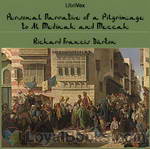 Personal Narrative of a Pilgrimage to Al-madinah and Meccah
Personal Narrative of a Pilgrimage to Al-madinah and Meccah
Sir Richard Francis Burton (1821 – 1890) was an English explorer, translator, writer, soldier, orientalist, ethnologist, linguist, poet, hypnotist, fencer and diplomat. He was known for his travels and explorations within Asia and Africa as well as his extraordinary knowledge of languages and cultures. According to one count, he spoke 29 European, Asian, and African languages.Burton's best-known achievements include traveling in disguise to Mecca, The Book of One Thousand Nights and A Night, an... | |
By: Richard Harding Davis (1864-1916) | |
|---|---|
 Notes of a War Correspondent
Notes of a War Correspondent
Experiences and observations of the journalist in the Cuban-Spanish War, the Greek-Turkish War, the Spanish-American War, the South African War, and the Japanese-Russian War, accompanied by "A War Correspondent’s Kit." | |
By: Richard Jefferies (1848-1887) | |
|---|---|
 The Gamekeeper at Home
The Gamekeeper at Home
Richard Jefferies (1848 – 1887) was born and spent his childhood on a farm at Coate,Wiltshire. He joined the ‘Wiltshire and Gloucestershire Standard’ in 1868 and also started to write articles and pamphlets on various agricultural issues and local history topics. He is best known for his depiction of English rural life in essays, books of natural history, and novels. This classic of English nature writing gives an idea of the life of a gamekeeper in southern England in the second half of the nineteenth century. | |
By: Richard M. McMurry | |
|---|---|
 Road Past Kennesaw: The Atlanta Campaign Of 1864
Road Past Kennesaw: The Atlanta Campaign Of 1864
“…there can be little doubt that the Federal drive on Atlanta, launched in May 1864, was the beginning of the end for the Southern Confederacy…. The Atlanta Campaign had an importance reaching beyond the immediate military and political consequences. It was conducted in a manner that helped establish a new mode of warfare. From beginning to end, it was a railroad campaign, in that a major transportation center was the prize for which the contestants vied, and both sides used rail lines to marshal, shift, and sustain their forces…... | |
By: Richard Sibbes (1577-1635) | |
|---|---|
 The Bruised Reed
The Bruised Reed
Richard Sibbes was a Puritan pastor and theologian in the 17th century. His best known work, The Bruised Reed, is based on a Scripture verse from Matt. 12:20: "A bruised reed shall he not break, and smoking flax shall he not quench, till he send forth judgment unto victory." Sibbes uses this text to respond to the despondent thoughts and fears that many Christians have. He draws a picture of Christ's gentleness and mercy for the Christians who feel themselves small and weak. The Bruised Reed is full of an amazing amount of soul-comfort... | |
By: Richard Threlfall | |
|---|---|
 On Laboratory Arts
On Laboratory Arts
| |
By: Richard W. Church (1815-1890) | |
|---|---|
 Bacon
Bacon
This investigation of Bacon the scholar and man of letters begins with a look at the early days ang progresses to his relationships with Queen Elizabeth and James I. It includes accounts of his positions as solicitor general, attorney-general, and chancellor. The book concludes with Bacon's failure, his overall philosophy, and summaries of his writings. | |
By: Richmal Crompton (1890-1969) | |
|---|---|
 William Again
William Again
Fourteen more stories about William Brown. William is a mischievous eleven year old who is puzzled by the adult world, which is no less puzzled by him. The humor is gentle and pleasing in this 1923 publication. The series of books is better known in the United Kingdom than in the United States. | |
 Still - William
Still - William
More humorous adventures by the world’s most misunderstood English boy. - Summary by david wales | |
 William -- The Fourth
William -- The Fourth
The world’s most confident, most chaos-creating eleven year old boy is at it again in these fourteen glorious and funny 1924 short stories. - Summary by David Wales | |
By: Roald Amundsen (1872-1928) | |
|---|---|
 The South Pole; an account of the Norwegian Antarctic expedition in the Fram, 1910-12
The South Pole; an account of the Norwegian Antarctic expedition in the Fram, 1910-12
In contrast to Scott’s South Pole expedition, Amundsen’s expedition benefited from good equipment, appropriate clothing, and a fundamentally different primary task (Amundsen did no surveying on his route south and is known to have taken only two photographs) Amundsen had a better understanding of dogs and their handling, and he used of skis more effectively. He pioneered an entirely new route to the Pole and they returned. In Amundsen’s own words: “Victory awaits him who has everything in order — luck, people call it... | |
By: Robert J. Braidwood (1907-2003) | |
|---|---|
 Prehistoric Men
Prehistoric Men
This little book, first published in 1948, is part of the Chicago Natural History Popular History series that explains difficult subjects in ways and terms we all can understand. It was published at a time in Anthropology when exciting things like carbon dating were first being used and refined. "Prehistory means the time before written history began. Actually, more than 99 per cent of man’s story is prehistory. Man is at least half a million years old, but he did not begin to write history until about 5,000 years ago... | |
By: Robert Buist | |
|---|---|
 The Family Kitchen Gardener
The Family Kitchen Gardener
The Family Kitchen Gardener contains plain and accurate descriptions (ca 1847) of all the different species and varieties of specifically American culinary vegetables, fruit, and herbs in alphabetical order. It includes the best mode of cultivating, propagating, and managing them in the garden or under glass, and a description of the best implements used in maintaining such gardens. | |
By: Robert Burton (1577-1640) | |
|---|---|
 The Anatomy of Melancholy
The Anatomy of Melancholy
The Anatomy of Melancholy is a book by Robert Burton, first published in 1621. On its surface, the book is a medical textbook in which Burton applies his large and varied learning in the scholastic manner to the subject of melancholia (which includes what is now termed clinical depression). Though presented as a medical text, The Anatomy of Melancholy is as much a sui generis work of literature as it is a scientific or philosophical text, and Burton addresses far more than his stated subject. In... | |
 Anatomy of Melancholy Volume 3
Anatomy of Melancholy Volume 3
The Anatomy of Melancholy is a book by Robert Burton, first published in 1621. On its surface, the book is a medical textbook in which Burton applies his large and varied learning in the scholastic manner to the subject of melancholia (which includes what is now termed clinical depression). Though presented as a medical text, The Anatomy of Melancholy is as much a sui generis work of literature as it is a scientific or philosophical text, and Burton addresses far more than his stated subject. In... | |
By: Robert C. Leslie (1826-1901) | |
|---|---|
 A Waterbiography
A Waterbiography
Robert C. Leslie (1826-1901) was an artist and writer who, at an early age fell in love with the sea, the sea of Sail, not of Steam. He describes the progression of this love from wave to wave and boat to boat. Leslie sailed during the Great Age of Sail before Industrialism had taken possession of Britain. Leslie comments on the early days of singlehanded small boat sailing: “When I first began boating in the early forties[1840s], what is now called single-handed cruising was almost unknown among amateurs…... | |
By: Robert Falcon Scott (1868-1912) | |
|---|---|
 The Journals of Robert Falcon Scott
The Journals of Robert Falcon Scott
Capt. Robert F. Scott's bid to be the leader of the first expedition to reach the South Pole is one of the most famous journeys of all time. What started as a scientific expedition turned out to be an unwilling race against a team lead by R. Admunsen to reach the Pole. The Norwegian flag already stood at the end of the trail when Scott's party reached their target. All the five men of the Scott expedition who took part in the last march to the Pole perished on their way back to safety. Robert F. Scott kept a journal throughout the journey, all the way to the tragic end, documenting all aspects of the expedition... | |
By: Robert Forsyth Scott (1849-1933) | |
|---|---|
 St. John's College, Cambridge
St. John's College, Cambridge
| |
By: Robert Green Ingersoll (1833-1899) | |
|---|---|
 Lectures of Col. R. G. Ingersoll
Lectures of Col. R. G. Ingersoll
Colonel Robert Green Ingersoll (1833–1899) was a Civil War veteran, American political leader and orator during the Golden Age of Freethought, noted for his defense of atheism. This book is the first of two volumes collecting Ingersoll’s speeches. | |
 The Ghosts And Other Lectures
The Ghosts And Other Lectures
| |
 The Works of Robert G. Ingersoll, Volume VIII. Interviews
The Works of Robert G. Ingersoll, Volume VIII. Interviews
| |
By: Robert Hugh Benson (1871-1914) | |
|---|---|
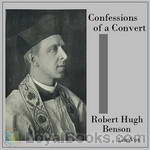 Confessions of a Convert
Confessions of a Convert
Robert Hugh Benson was the youngest son of Edward White Benson, the Archbishop of Canterbury and his wife Mary. Benson was was a prolific and popular writer during his time, and in 1903 he became a prominent convert to the Roman Catholic Church from Anglicanism . In 1904 he was ordained a Catholic priest.This book is his personal story of his journey to the Catholic faith, containing comparisons between Catholicism and the Anglican religion. | |
 The Friendship of Christ
The Friendship of Christ
Robert Hugh Benson, who was educated at Eton College and Trinity College, Cambridge, was ordained an Anglican priest in 1895 by his father, the Archbishop of Canterbury. Eight years later, after weighty consideration, Robert Benson converted to Roman Catholicism. In 1904 he was ordained a Roman Catholic priest and took up residence in Cambridge, where he ministered to Roman Catholic students as their unofficial chaplain. In 1911, he was made a monsignor. Despite the brevity of his earthly life, Benson... | |
By: Robert James Manion (1881-1943) | |
|---|---|
 Surgeon In Arms
Surgeon In Arms
Robert James Manion was a Canadian doctor who volunteered in the Canadian medical corps during World War I. This book is his memoir of the war. After the war he entered politics and served in several Canadian governments. The listener may note a lack of mention of the United States soldier; this is because the memoir was written before the entry of that country into the war. - Summary by David Wales | |
By: Robert Jennings (1824-1893) | |
|---|---|
 Cattle and Their Diseases Embracing Their History and Breeds
Cattle and Their Diseases Embracing Their History and Breeds
| |
By: Robert Kemp Philp (1819-1882) | |
|---|---|
 Reason Why
Reason Why
This collection of useful information on "Common Things" is put in the interesting form of "Why and Because," and comprehends a familiar explanation of many subjects which occupy a large space in the philosophy of Nature, relating to air, animals, atmosphere, caloric, chemistry, ventilation, materia medica, meteorology, acoustics, electricity, light, zoölogy, etc. - Summary by Anonymous | |
By: Robert Leighton | |
|---|---|
 Dogs and All About Them
Dogs and All About Them
This comprehensive guide on dog-rearing looks at dogs as more than just pets - as people's best friends. The author describes each breed of dog in a detailed and systematic way, with complete notes on show-dogs. | |
By: Robert Louis Stevenson | |
|---|---|
 The Amateur Emigrant
The Amateur Emigrant
In July 1879, Robert Louis Stevenson left Scotland to meet his future wife in her native California. Leaving by ship from Glasgow, Scotland, he determined to travel in steerage class to see how the working classes fared. At the last minute he was convinced by friends to purchase a ticket one grade above the lowest price, for which he was later thankful after seeing the conditions in steerage, but he still lived among the ‘lower’ classes. His comments on the experience make interesting reading. His father however was so shocked at the thought of his son associating with people ‘beneath him’ that the work was not published for a number of years, | |
 Essays of Robert Louis Stevenson
Essays of Robert Louis Stevenson
“Extreme busyness…is a symptom of deficient vitality; and a faculty for idleness implies a catholic appetite and a strong sense of personal identity.” What comforting words for the idle among us! Like many of the best essayists, Stevenson is very much the genial fireside companion: opinionated, but never malicious; a marvellous practitioner of the inclusive monologue. In this collection of nine pieces he discusses the art of appreciating unattractive scenery, traces the complex social life of dogs, and meditates in several essays upon the experience of reading literature and writing it... | |
 Travels with a Donkey in the Cevennes
Travels with a Donkey in the Cevennes
A classic of travel writing, this book recounts Stevenson's adventures on an extended walk through uplands and mountains in south-western France. Humorous on his own failings as a traveller, and on his travails with Modestine the self-willed donkey, it is also an exploration of peasant life in an area marked by the violence of the wars of religion. This version includes the fragment "A mountain town in France", originally intended as the opening chapter, but often omitted and published as a separate essay. | |
By: Robert May (1588-) | |
|---|---|
 The accomplisht cook or, The art & mystery of cookery
The accomplisht cook or, The art & mystery of cookery
| |
By: Robert Michael Ballantyne (1825-1894) | |
|---|---|
 The Madman And The Pirate
The Madman And The Pirate
R. M. Ballantyne (April 24, 1825 – February 8, 1894) was a Scottish juvenile fiction writer. Born Robert Michael Ballantyne in Edinburgh, he was part of a famous family of printers and publishers. At the age of 16 he went to Canada and was six years in the service of the Hudson’s Bay Company. He returned to Scotland in 1847, and published his first book the following year, Hudson’s Bay: or, Life in the Wilds of North America. For some time he was employed by Messrs Constable, the publishers, but in 1856 he gave up business for the profession of literature, and began the series of adventure stories for the young with which his name is popularly associated. | |
 Man on the Ocean A Book about Boats and Ships
Man on the Ocean A Book about Boats and Ships
| |
 Battles with the Sea
Battles with the Sea
| |
 Up in the Clouds Balloon Voyages
Up in the Clouds Balloon Voyages
| |
By: Robert Millikan (1868-1953) | |
|---|---|
 On the Elementary Electrical Charge
On the Elementary Electrical Charge
The experiments herewith reported were undertaken with the view of introducing certain improvements into the oil-drop method of determining e and N and thus obtaining a higher accuracy than had before been possible in the evaluation of these most fundamental constants. From the Physical Review, Vol. II, No. 2 | |
By: Robert Mueller | |
|---|---|
 Report On The Investigation Into Russian Interference In The 2016 Presidential Election
Report On The Investigation Into Russian Interference In The 2016 Presidential Election
The report from Robert Mueller's team reporting the results of investigations into Russian interference in the 2016 Presidential Election. This report was released on April 18, 2019. The recording is of the originally-released, redacted version. - Summary by Samuel StinsonNOTE: Section 14 was divided into two parts after the project was well underway. As a result, the section numbers in the audios do not correspond with the numbers in the metadata and file names after section 14. | |
By: Robert R. Moton (1867-1940) | |
|---|---|
 Finding a Way Out: An Autobiography
Finding a Way Out: An Autobiography
He says about this work: "I have tried to record the events that have given character and colour to my own life, and at the same time to reflect upon the impressions made upon my mind by experiences that I could not always reconcile with what I had learned of American ideals and standards." - Summary by author in the preface | |
By: Robert S. Rait (1874-1936) | |
|---|---|
 Life in the Medieval University
Life in the Medieval University
| |
By: Robert Smythe Hichens (1864-1950) | |
|---|---|
 The Spell of Egypt
The Spell of Egypt
The author, a British journalist and novelist, is interested in the feel of the places he visits. He describes at length a visit he has made to Egypt, with emphasis on the emotional response the places generate. | |
By: Robert Sterling Yard (1861-1945) | |
|---|---|
 The Book of the National Parks
The Book of the National Parks
Robert Sterling Yard (February 1, 1861 – May 17, 1945) was an American writer, journalist, and wilderness activist. Born in Haverstraw, New York, Yard graduated from Princeton University and spent the first twenty years of his career in the editing and publishing business. In 1915, he was recruited by his friend Stephen Mather to help publicize the need for an independent national park agency. Their numerous publications were part of a movement that resulted in legislative support for a National Park Service (NPS) in 1916... | |
By: Robert Vashon Rogers (1843-1911) | |
|---|---|
 Law and Medical Men
Law and Medical Men
The idea that in the library of nearly every practitioner in the professions of both Physic and Law there has been for some time a small gap among the books, which could be filled by a little work like this now submitted, has induced the author to prepare and publish the following pages. While it is hoped that this little work will prove of use to the members of the Legal and Medical Professions, it is intended to be suggestive rather than exhaustive—a primer not an encyclopædia; and... | |
By: Robert Walsh (1784-1859) | |
|---|---|
 The American Quarterly Review, No. 17, March 1831
The American Quarterly Review, No. 17, March 1831
| |
By: Rodris Roth (1931-2000) | |
|---|---|
 Tea Drinking In 18th-Century America: Its Etiquette And Equipage
Tea Drinking In 18th-Century America: Its Etiquette And Equipage
The title of this 1961 Smithsonian Institution bulletin says it all. “In 18th-century America, the pleasant practice of taking tea at home was an established social custom with a recognized code of manners and distinctive furnishings. Pride was taken in a correct and fashionable tea table whose equipage included much more than teapot, cups, and saucers. It was usually the duty of the mistress to make and pour the tea; and it was the duty of the guests to be adept at handling a teacup and saucer and to provide social ‘chitchat... | |
By: Rolf Boldrewood (1826-1915) | |
|---|---|
 Shearing in the Riverina
Shearing in the Riverina
| |
 Plain Living
Plain Living
Seemingly down-on-his-luck Australian sheep rancher and orchard grower kindly teaches his loving family the value of money through 'plain living'. Fellow fans of Jon Cleary's "The Sundowners", set a generation later, may enjoy this. - Summary by Matt Pierard | |
By: Rosa Campbell Praed (1852-1935) | |
|---|---|
 Policy and Passion
Policy and Passion
"Policy and Passion, a Novel of Australian Life" tells the story about a father and daughter, torn between the policy of the country in which they live and the passions both have. The father, Thomas, is a rising politician until his love for a married woman changes the game while the daughter, Honora, falls in love with an English nobleman. But this is not only a love story. This novel tells about the early days of Australia, and tells the story of a whole community. It receives scholarly attention as a work about colonialism. - Summary by Stav Nisser | |
By: Rosa Nouchette Carey (1840-1909) | |
|---|---|
 Other People's Lives
Other People's Lives
A series of stories by Rosa Nouchette Carey who was a popular English novelist, whose works reflected the wholesome values of her time. They often contained the grit and realism of the day. Carey often wrote about the domestic fiction of the period, which she was presumed to have had personal acquaintance with such as - families making do on small means, coming to terms with bereavement and new responsibilities, moving into a new neighbourhood or a different house and allegiances, frictions and jealousies among members of a large family. - Summary by Lynda Marie Neilson | |
By: Rosanna Eleanor Leprohon (1829-1879) | |
|---|---|
 Armand Durand
Armand Durand
Armand Durand, published in 1868, was written by Rosanna Leprohon, an English-speaker with an insider’s knowledge of French Canada, thanks to her Montreal education and marriage to a man from an old Québécois family. Paul Durand, a prosperous Québécois farmer, marries in quick succession two very different wives, and fathers two very different sons. The first son, Armand, delicate and bookish, is destined for a legal career in the city; the second, Paul Junior, tougher and down-to-earth, continues life on the farm... | |
By: Rose Gollup Cohen (1880-1925) | |
|---|---|
 Out of the Shadow
Out of the Shadow
In this interesting autobiography we get a very candid look into the life of Rose Cohen, a Russian Jewish girl who immigrates from Russia to the Lower East Side of New York city with her family. From the deplorable conditions in the garment sweatshops, life in the tenements, the setbacks due to poor health and the slow weakening of the family's faith she provides us with a vivid insight into the hopes and frustrations of an immigrant Jewish family adapting to American life. | |
By: Rose Wilder Lane (1886-1968) | |
|---|---|
 Henry Ford's Own Story
Henry Ford's Own Story
Rose Wilder Lane was a newspaper reporter, free-lance writer, political activist, and the daughter of Laura Ingalls Wilder, author of the "Little House" series of popular children's books. In this biography of Henry Ford, Ms. Lane worked directly with Ford to tell his story from his birth to his founding of the Ford Motor Company and his use of modern assembly lines to mass produce his cars. | |
By: Ross De Witt Netherton (1918-) | |
|---|---|
 The Fairfax County Courthouse
The Fairfax County Courthouse
| |
By: Rudolf Virchow (1821-1902) | |
|---|---|
 On Famine Fever and Some of the Other Cognate Forms of Typhus
On Famine Fever and Some of the Other Cognate Forms of Typhus
Rudolf Virchow , professor of medicine and pathology at the Charité Hospital in Berlin, published more than 2000 papers and dozens of books. His investigation of the 1847-1848 typhus epidemic in Upper Silesia laid the foundations of public health in Germany. During the Revolution of 1848, Virchow helped found a journal promoting medicine as a social science. For physicians, his contributions to the understanding of the pathophysiology of disease and to the working vocabulary of medicine were fundamental, but Virchow also believed that social injustice and political oppression lay at the heart of many illnesses and that "the physician is the natural attorney of the poor." | |
By: Rudyard Kipling (1868-1936) | |
|---|---|
 France At War: On the Frontier of Civilization
France At War: On the Frontier of Civilization
In 1915, as the "Great War" (World War 1) entered its second year Rudyard Kipling made a journalistic tour of the front, visiting French armed forces. By then he was already winner of the Nobel Prize for Literature (the first writer in English to be so honoured). He published his observations in articles in the Daily Telegraph in England, and in the New York Sun. At that stage of the war nationalistic sentiments were running high but the true cost of war was beginning to be understood "at home"... | |
 Letters of Travel
Letters of Travel
| |
By: Rufus Estes (b. 1857) | |
|---|---|
 Good Things to Eat as Suggested by Rufus
Good Things to Eat as Suggested by Rufus
Rufus Estes was born a slave in 1857 in Tennessee, and experienced first hand the turmoil of the Civil War. He began working in a Nashville restaurant at the age of 16, and in 1883 took up employment as a Pullman cook. In 1897, he was hired as principal chef for the private railway car of U.S. Steel magnates (the fin-de-siecle equivalent of today’s Lear Jets for corporate travel). There he served succulent fare for the rich and famous at the turn of the 20th century. | |
By: Rufus T. (Rufus Tracy) Strohm (1877-) | |
|---|---|
 Engineering Bulletin No 1: Boiler and Furnace Testing
Engineering Bulletin No 1: Boiler and Furnace Testing
| |
By: Rupert H. Wheldon (1883-) | |
|---|---|
 No Animal Food and Nutrition and Diet with Vegetable Recipes
No Animal Food and Nutrition and Diet with Vegetable Recipes
Though little is known about its author, this is considered the first vegan cookbook ever written. At the time of its composition, the Vegetarian Society and other advocates of vegetarian diets were engaged in a debate about the inclusion of dairy and eggs in one's regime. This text declares, from the title to the footnotes, that the best diet is free from all animal products. The arguments span historical, physical, ethical, aesthetic, and economic considerations and conclude with practical advice that stands the test of time. An essential text for those interested in vegetarianism and animal rights. | |
By: Russel Doubleday (1872-1949) | |
|---|---|
 Stories of Inventors
Stories of Inventors
Doubleday chronicles the history of everyday inventions that form the foundation of technology now common through the world. While some of the inventions are no longer used, each example shows how inventors contributed to technology through perseverance, inspiration and clever observations. In each chapter, he gives a clear, understandable background of the technology.Many of the now outdated inventions may have inspired later inventions by meeting emerging demands. For example, Edison's filament bulb is now being phased out by more efficient CFL's, but Edison's contribution to indoor lighting likewise removed the need for inefficient gas-burning lamps... | |
By: Russell Herman Conwell (1843-1925) | |
|---|---|
 Acres of Diamonds
Acres of Diamonds
Text of famous inspirational lecture and biography of Russell Conwell, a Baptist minister and Temple University Founder | |
By: Ruth Edna Kelley | |
|---|---|
 The Book of Hallowe'en
The Book of Hallowe'en
This book is intended to give the reader an account of the origin and history of Hallowe’en, how it absorbed some customs belonging to other days in the year,—such as May Day, Midsummer, and Christmas. The context is illustrated by selections from ancient and modern poetry and prose, related to Hallowe’en ideas. | |
By: Ruth Ogden (1853-1927) | |
|---|---|
 Little Queen of Hearts
Little Queen of Hearts
A charming children's story following the trials and tribulations of the simple life of Marie-Celeste as she endears herself to everyone whose life she touches. With her parents, she moves to Windsor Castle to live with her orphaned cousin and learns about Queen Victoria, her life, home and family as well as other aspects of English life, sharing her knowledge and innocent insight in a delightful way. | |
 Courage (Dramatic Reading)
Courage (Dramatic Reading)
Courage follows the story of Courage, a young 12-year-old orphaned girl, who adapts to to meeting and living with new people. She lives up to her name . . . but, what becomes of her in the end? - Summary by bhavyaCourage: Elsie SelwynLarry: Larry WilsonSylvia: LikeManyWatersMiss Julia: Beth ThomasMary Duff: FoonGentleman/David/Mr. Everett: TriciaGJohn: Josh KibbeyCelia Thaxter: Leanne YauBig Bob: Campbell SchelpMan, Captain, Man 2: BhavyaBoy: William WhiteDick, Father, Bruce: Elijah FisherMrs. Everett:... | |
By: Ruth Plumly Thompson (1891-1976) | |
|---|---|
 Wishing Horse of Oz
Wishing Horse of Oz
Magic wishing emeralds mysteriously arrive in the little kingdom of Skampavia. King Skamperoo immediately confiscates them and wishes to become the Emperor of Oz, with his magic horse Chalk as his advisor. All the residents of Oz are enchanted to forget Ozma and their own rulers, except for Dorothy and Pigasus the flying pig. Can Dorothy and Pigasus break the enchantment and rescue Princess Ozma? Will they forge an unlikely alliance with the Gnome King? And who is the real owner and possessor of the secret of the wishing emeralds?The Wishing Horse of Oz is the twenty-ninth in the series of Oz books created by L. Frank Baum. | |
By: S. A. Reilly | |
|---|---|
 Our Legal Heritage
Our Legal Heritage
| |
By: S. Baring-Gould (1834-1924) | |
|---|---|
 The Book of Werewolves: Being an Account of a Terrible Superstition
The Book of Werewolves: Being an Account of a Terrible Superstition
A survey of the myths and legends concerning lycanthropy from ancient times to the Victorian Era. | |
 Curious Myths of the Middle Ages
Curious Myths of the Middle Ages
This volume is an example of Sabine Baring-Gould's extensive research into the middle ages. This volume of 12 curiosities was one of Baring-Gould's most successful publications. | |
 Curiosities of Olden Times
Curiosities of Olden Times
This book is a collection of 17 gems of random knowledge, such as what women are made of and the philosopher's stone, written in Baring-Gould's own style. | |
By: S. C. (Stephen Cullen) Carpenter (-1820?) | |
|---|---|
 The Mirror of Taste, and Dramatic Censor, Vol. I, No. 4, April 1810
The Mirror of Taste, and Dramatic Censor, Vol. I, No. 4, April 1810
| |
By: S. L. (Stephen Lincoln) Goodale (1815-1897) | |
|---|---|
 The Principles of Breeding or, Glimpses at the Physiological Laws involved in the Reproduction and Improvement of Domestic Animals
The Principles of Breeding or, Glimpses at the Physiological Laws involved in the Reproduction and Improvement of Domestic Animals
| |
By: S.E. Kiser (1862-1942) | |
|---|---|
 Father
Father
A tribute to fatherhood by a little known author, - Summary by David Lawrence | |
By: Saint Ambrose (337/340-397) | |
|---|---|
 On the Duties of the Clergy
On the Duties of the Clergy
Aurelius Ambrosius was a fourth century cleric who rose to become the Archbishop of Milan in 374 AD. His father was a powerful Roman general and the prefect of Gaul. His brother and sister were also consecrated as saints by the Catholic Church. As an infant, a swarm of bees settled over his face and flew away without harming the baby, but left behind a drop of honey and this was seen as a sign of his future eloquence and bees are often painted in his portraits as his symbols. Ambrosius (or Ambrose as he is referred to in English) was a highly learned man, well versed in Latin and Greek, theology and many other subjects... | |
 Concerning Virgins
Concerning Virgins
Concerning Virgins (De Virginibus) is a series of letters, compiled into three “books,” St. Ambrose wrote to his sister, Manellia, These, perhaps Ambrose’s earliest writings, were written in 377 CE. Written in a rather light-handed non-technical style they appear as ethical guides to women who are contemplating entering nunneries. More importantly, they set the tone for Ambrose’s later writing on ethics. Concerning Virgins was referred to by other patristic writers including St. Jerome, St Augustine and Cassian, and are now included in the extra-biblical cannon of the early church fathers. | |
By: Saint Augustine of Hippo (354-420) | |
|---|---|
 The City of God
The City of God
Rome having been stormed and sacked by the Goths under Alaric their king, the worshipers of false gods, or pagans, as we commonly call them, made an attempt to attribute this calamity to the Christian religion, and began to blaspheme the true God with even more than their wonted bitterness and acerbity. It was this which kindled my zeal for the house of God, and prompted me to undertake the defense of the city of God against the charges and misrepresentations of its assailants. This work was in my hands for several years, owing to the interruptions occasioned by many other affairs which had a prior claim on my attention, and which I could not defer... | |
 Confessions
Confessions
Confessions (Latin: Confessiones) is the name of an autobiographical work, consisting of 13 books, by St. Augustine of Hippo, written between AD 397 and AD 398. Modern English translations of it are sometimes published under the title The Confessions of St. Augustine in order to distinguish the book from other books with similar titles, such as Jean-Jacques Rousseau’s Confessions. | |
 The Enchiridion
The Enchiridion
The Enchiridion, Manual, or Handbook of Augustine of Hippo is alternatively titled, “Faith, Hope, and Love”. The Enchiridion is a compact treatise on Christian piety, written in response to a request by an otherwise unknown person, named Laurentis, shortly after the death of Saint Jerome in 420. It is intended as a model for Christian instruction or catechesis. – As the title indicates, the work is organized according to the three graces necessary for the Christian worship of God: Faith, Hope and Love... | |